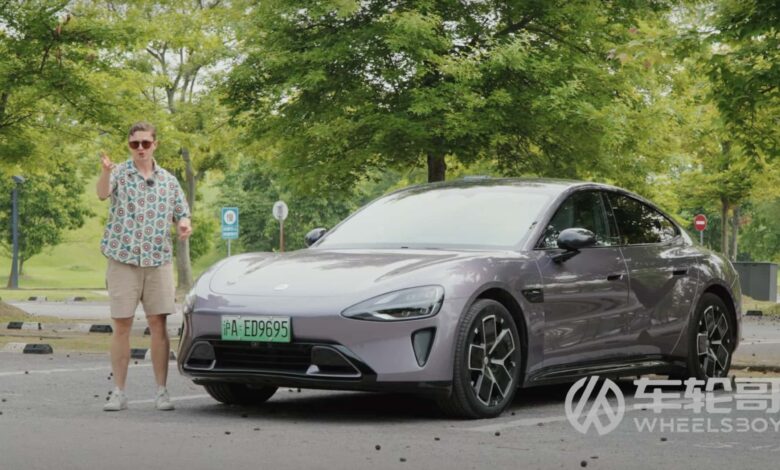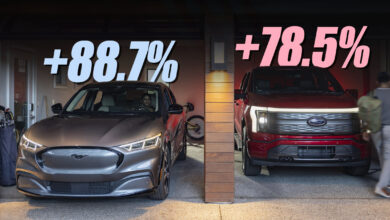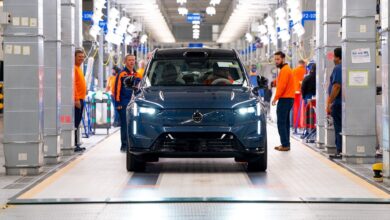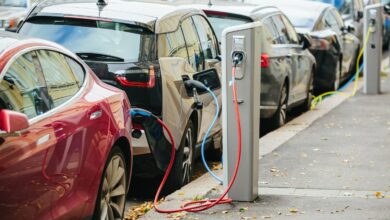Yes, China’s Apple Car Is That Good

Other automakers: this is what you’re up against. Start taking notes.
May 18, 2024 at 9:59am ET
Within 24 hours of the Xiaomi SU7 making its grand debut in China earlier this year, about 100,000 people put down a deposit for an electric vehicle from a company that had never made a single car before. Even by the standards of some of the EV startups that have come and gone over the years, that’s a mind-blowing statistic. How did that happen, exactly?
To understand that, you have to understand Xiaomi. And you may just start to understand just how far ahead China’s EV industry has become.
China’s EV industry pulls ahead
Thanks to copious government subsidies, a decades-long focus on battery tech and intense competition within the country, China’s EV industry has pulled ahead of the rest of the world. Now the question is how the U.S., Europe and other Asian automakers can catch up.
When reporter Kevin Williams went to the Beijing Auto Show in April, experiencing the Xiaomi SU7 was high on his list. That proved tougher than expected at the show itself, with people waiting in line for hours just to see the car. We still have not driven one yet, though we hope to eventually.
But American-born, China-based YouTube car reviewer Ethan Robertson, aka Wheelsboy, got in the enviable position of actually testing one himself. And in his new video, he explains where the hype comes from.
Xiaomi’s SU7 (pronounced “Soo-Seven”) has been described as China’s Apple Car, and for good reason. As Ethan explains, Xiaomi is a household name in China (and much of the rest of the world) for manufacturing TVs, battery packs, smartphones, washing machines… well, basically everything in the world of smart devices. It’s as robust as any consumer goods company with advanced software shared across most of those gadgets.
So naturally, if you’re in the Xiaomi device ecosystem already, a car built around that makes sense; we see the same appeal with Apple CarPlay and Android Automotive here. But Xiaomi’s approach goes deeper, and as an added bonus, the car looks kind of like a budget Porsche Taycan. (Even people in China are pointing that out, Ethan says, but I’m not sure I’d complain if my car looked like a Taycan.)
The stats boost its case: about 300 horsepower in single-motor rear-wheel-drive form, a BYD Blade battery pack, 434 miles of range on China’s testing cycle, all for the equivalent of $30,500 in the U.S. It’s being billed as a Tesla Model 3 competitor, just cheaper and with more range.
Even if you’re not a fan of China or its EVs, you can start to see the appeal. Even more so when you get inside, when you can tell your car to turn on your Xiaomi smart home air conditioner, your Xiaomi smart lights, or check on your dog with your Xiaomi home camera… you get the idea. It executes on the idea Apple had, something that’s tied more directly to your other devices than ever before.
It’s also comfortable, reasonably powerful in Standard and Pro trims, and blazing quick in top Max form—the zero to 100 km/h (62 mph) time there is claimed at just 2.78 seconds. The Max’s top speed supposedly outclasses the Taycan Turbo S as well, though I’d like to see evidence of that for myself. It’s also not as agile as a Model 3, owing to its bigger size and greater weight.
There are some downsides to this, of course; it’s still a product that came to market very quickly. Ethan recounts stories of thin paint, loose body panels and overheating brakes on the track as early adopters complain of quality issues. Then again, that’s typical of many EV startups and even so-called “legacy” automakers bringing new cars to market.
But even as countless doubts remain about China’s auto industry—excess supply, unused car factories, a slowing economy, labor issues throughout the supply chain and the inevitable consolidation of many brands—the Xiaomi SU7 proves that the foreign competition needs to take it seriously.
Contact the author: patrick.george@insideevs.com
Read more



